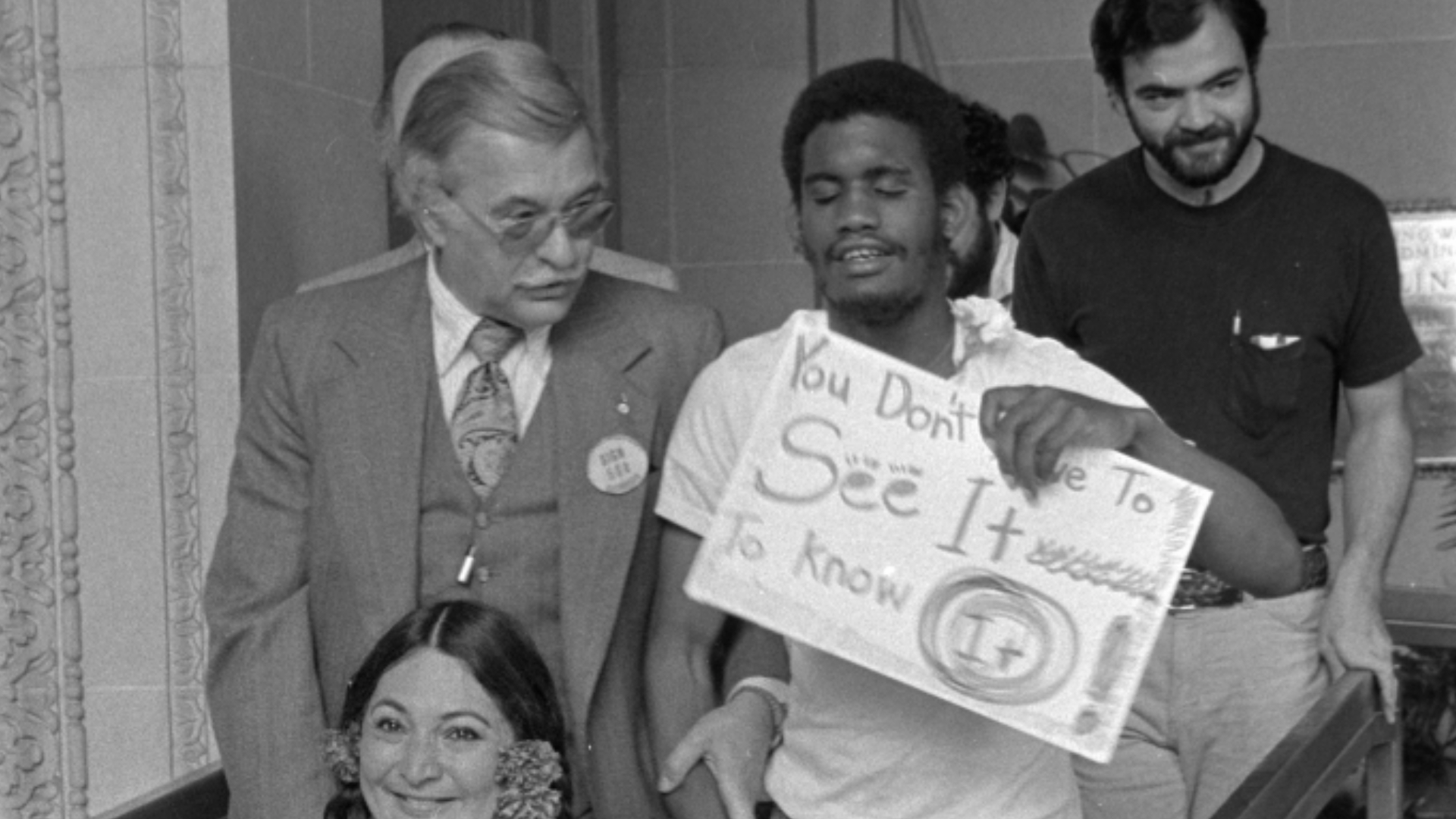“Netflix’s documentary feature “Crip Camp” showcases the activists behind one of the longest occupational sit-ins in San Francisco’s history. Photo courtesy Netflix.
By Destiny Jackson, Arts & Entertainment Editor
Though the 2021 Oscar-nominated documentary “Crip Camp” was robbed of a well-deserved award—to a film about a man who befriends an Octopus— this documentary still has tons of merit.
Netflix’s documentary “Crip Camp” directed and produced by filmmakers Nicole Newnham and Jim LeBrecht (who also provides most of the narration throughout the film) strips down the able-bodied view of disabled citizens; and builds up what an impactful, empowering narrative looks like. By having disabled people behind and in front of the camera, centered and in control of their own narrative, audiences are able to unflinchingly see the struggles and triumphs that can occur without able-bodied oppression and interference.
Divided into two halves (narratively speaking) the 108-minute documentary spends the first half documenting the New York crippled safe haven—a.k.a “crip camp”—Camp Jened in the summer of 1971. Here at Camp Jened, disabled children, teens and adults can experience the joy of roaming wild and free during the peak of the hippie age.
Along with their camp counselors and aids, the campers are able to do things like making lasagna, have pow-pows, play sports, and even have sexual experiences. One camper, inflicted with spina bifida, jokingly explains that his first kiss and trouser hand-touch “was the best physical therapy” he had ever had.
Though Camp Jened existed as a place where disabilities didn’t quite matter, there was still a societal hierarchy that applied within the confines of the camp.
“The polios were on top because they looked more normal and the [people with cerebral palsy] were at the bottom,” camper-activist Denise Jacobson said.
This is used to parallel the societal views of the real world that the campers had to return to after camp was over; a world that lacked accommodations for those in wheelchairs and other ranges of handicaps.
Jacobson’s husband, Neil Jacobson, also admits in the documentary that his own mother reflected systems of hierarchy when he proposed marriage to Denise after meeting at Camp Jened one summer:
“My mother said, ‘I know why you want to marry a handicapped girl,” considering that both Neil and Denise have cerebral palsy. “But why couldn’t you marry a polio?’”
The second half of the film focuses heavily on the 1977 Disability Rights Movement in San Francisco, also known as the 504 sit-in. There’s too much ground to cover about the movement in one article, but essentially what you need to know is: Judith Heumann and Kitty Cone (both featured in the documentary) organized 150 people to rally for better access to federally funded buildings across the country. This meant ramps, public transportation lifts, accessible public bathrooms, housing accommodations, and barring discriminatory practices against the disable bodied people. To this day, it remains the longest non-violent occupation of a federal building in United States history at approximately 28 days (depending on which source you speak to).
The most notable highlight in this documentary for me was the brief spotlight placed on the Black Panther Party, who seems to be an underlying and overlying subject of two other Oscar-nominated films of the 2020/2021 era.
“The Trial of the Chicago 7” portrays BPP co-founder Bobby Seale as just a blip on the radar of the localized 1968 riots at the Democratic National Convention in Chicago (a portrayal that Seale mentioned he did not like on a visit to our school, by the way). “Judas and the Black Messiah” a whole film about the BPP and the untimely death of the Illinois leader, Fred Hampton, orchestrated by the FBI; demonstrated that while the Panthers were heavy in fighting back against large governmental systems of racial oppression, they also gave back to their local communities via food pantries. And “Crip Camp” makes a brief, but powerful note that the Oakland chapter was the primary reason as to why the occupation lasted for as long as it did, thanks to disabled member Brad Lomax, who was beautifully profiled in the New York Times for his sole involvement with bringing the Panthers and the disabled movement together.
Lomax could hardly speak due to complications of a sudden onset of multiple sclerosis in his young adult years, but managed to finesse both worlds of being a BPP member and a member of the disabled community by tapping into the intersectionality of being discriminated against for being Black and disabled.
The BPP took notice during the occupation. Having 150 people spend days occupying a building is tough, but what the documentary wants to show you is that having 150 people on a wide spectrum of disabilities is even harder. Access to medicine, toothpaste, showers, catheters, clean water and food was hard to come by and lead to other similar occupations for the movement to fizzle out in less than two weeks. But thanks to the BPP involvement and care for Lomax, the party immediately mobilized and kept everyone fed for all 28 days of the occupation for free.
When questioned by one of the occupiers, activist Corbett O’Toole as to why the BPP, who already had limited resources and faced their own struggles with unfair laws. An unnamed Panther replied: “You are trying to make the world a better place, and that’s what we are about. We are about that for everybody.”
“Crip Camp” is a wholesome eye-opening documentary that should not be missed; as it details the liberation, oppression, and fight for equality through the eyes of people that are often normally overlooked or pitied by what hindrances they might face. “Crip Camp” is instead a story about what hope and persistence can get you despite what the world thinks you can do.

